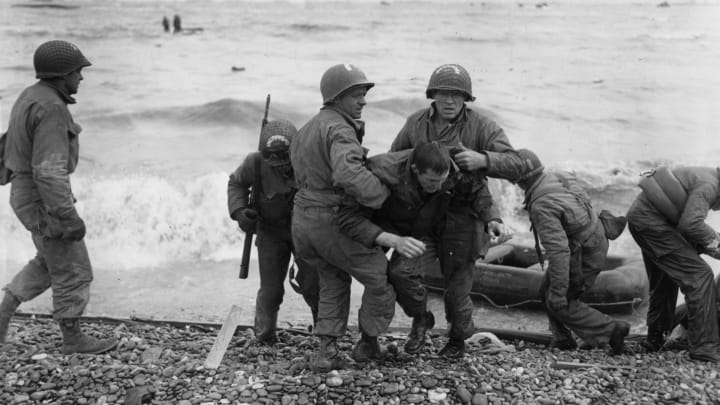Dwight Eisenhower Wrote a Letter Accepting Blame for D-Day's Failure, Just in Case
By Lucas Reilly

General Dwight D. Eisenhower sounded confident before the Normandy invasion. “This operation is planned as a victory, and that’s the way it’s going to be. We’re going down there, and we’re throwing everything we have into it, and we’re going to make it a success,” he said.
Operation Overlord was a massive campaign—an invasion of 4000 ships, 11,000 planes, and more than 2 million men—that was launched on June 6, 1944. Despite a year of strategizing and a boatload of confidence, Eisenhower had a quiet plan in case his mission failed. If the armada couldn’t cross the English Channel, he’d order a full retreat. One day before the invasion, he prepared a brief statement—just in case:
“Our landings in the Cherbourg-Havre area have failed to gain a satisfactory foothold and I have withdrawn the troops. My decision to attack at this time and place was based on the best information available. The troops, the air and the Navy did all that bravery and devotion to duty could do. If any blame or fault attaches to the attempt it is mine alone.”
Although the Allies suffered about 12,000 casualties during the months-long invasion D-Day launched, 155,000 successfully made it ashore, with thousands more on the way. Within a year, Germany would surrender.
What was D-Day?
D-Day kicked off the Battle of Normandy and marked a turning point in World War II. On June 6, 1944, Allied forces began a major invasion of Nazi-occupied France. They targeted the beaches of Normandy, hoping to catch the Germans off guard—Allied intelligence assumed the enemy would expect them to attack Pais de Calais, as that point of entry was closer to the UK. (The Allies had previously launched a misinformation campaign suggesting they intended to attack Pas de Calais.)
The Allies approached Normandy by land, air, and sea. They targeted more than one beach: The invasion actually involved a 50-mile stretch of coastline. Though D-Day was a success, it was not without casualties—4414 Allied troops died, and more than 5000 were wounded.
Read More About World War II:
manual
A version of this story originally ran in 2019; it has been updated for 2024.